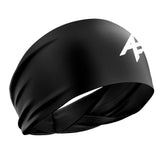If you dream of being a standout player on the basketball court, one skill you can’t ignore is dribbling. Great dribbling gives you the power to break down defenders, run plays smoothly, and keep the ball safe under pressure. Whether you’re a beginner or an experienced player looking to sharpen your skills, working on your dribble every day makes a big difference.
In this guide, you’ll discover 10 proven tips to help you dribble better in basketball. These tips are easy to understand and can be practiced alone, at the gym, or even at home. So grab your ball, lace up your shoes, and let’s take your ball-handling to the next level!
1. Always Keep Your Head Up
Good dribblers never watch the ball. Keeping your head up is the first habit you should develop. When you keep your eyes forward, you can see your teammates, read defenders, and make smart decisions. Start slowly: practice dribbling while walking in a straight line, focusing your eyes on a point ahead. Over time, this simple habit will help you stay aware of the game while controlling the ball like a pro.
2. Use Your Fingertips for Better Control
Many beginners slap the ball with their palms, but the real secret is using your fingertips. Fingertip control lets you bounce the ball softly and react quickly to defenders. When you practice, pay attention to how your fingers feel the ball. The more you use your fingertips, the more you’ll feel connected to the ball, which builds confidence during tough plays.
3. Stay Low for Stronger Defense
Your body position is key to dribbling safely. Keep your knees bent, your hips low, and your back straight. This low stance makes you quicker and harder to knock off balance. It also helps you explode past defenders when you change speed or direction. Try practicing in front of a mirror — you’ll see exactly how low you are and can fix your form.
4. Train Both Hands Equally
A player who can dribble with both hands is harder to guard. Many players feel comfortable with their strong hand but weak with the other. Fix this by spending extra practice time dribbling with your non-dominant hand. Do simple moves like walking and dribbling, crossover dribbles, or figure-eight dribbles. Strong skills on both sides make you unpredictable and much more dangerous on offense.
5. Control the Dribble Height
Being able to change how high you dribble helps in different game situations. For fast breaks, dribble higher and push the ball forward. When defenders close in, keep your dribble low, around your knee level, to protect it. Practice bouncing the ball at different heights while standing still or moving — this teaches you to switch quickly and react to pressure.
6. Protect the Ball with Your Body
Smart dribblers use their body as a shield. Keep your shoulder between the defender and the ball. Use your free arm to block reaching hands without fouling. This way, even if someone tries to steal the ball, your body keeps it safe. Practice this by dribbling while imagining a defender on you, or ask a teammate to apply light pressure during drills.
7. Master Stationary Dribbling First
Before doing advanced moves, get comfortable with basic dribbling while standing still. Spend time on drills like low dribbles, high dribbles, and switching hands without moving your feet. Once you feel natural with stationary dribbles, add movement. This solid base helps you handle the ball confidently when running plays or facing aggressive defenders.
8. Mix Up Your Speed and Direction
To beat defenders, don’t be predictable. Use changes in speed and sudden shifts in direction. Practice moving slowly, then quickly explode into a sprint while dribbling. Moves like the hesitation dribble, crossover, or in-and-out dribble rely on quick pace changes. This makes you a tough player to guard and opens up space for passes or shots.
9. Use Cone Drills to Improve Footwork
Cone drills train your footwork, ball control, and quick reactions. Set up cones or small objects in a zigzag or straight line and dribble through them using different moves. Try crossovers, behind-the-back dribbles, or spins while weaving around the cones. Start slowly, then increase your speed as you get more confident.
10. Make Daily Practice a Habit
Great dribblers aren’t born overnight — they put in daily work. Spend at least 20–30 minutes every day on your dribbling drills. You don’t even need a gym; practice in your driveway or garage. Dribble during TV commercials or while listening to music. The more you practice, the more natural it will feel, and you’ll handle game pressure like it’s nothing.
Get Ready with AF1 Custom Basketball Gear
Looking good and feeling comfortable boosts your confidence on the court. At AthleticForce1, we design high-quality custom basketball shirts, team backpacks, and performance gear that help you focus on your game. Make sure you’re geared up for your next training session — browse our basketball uniform collection now and take your game to new heights!
Level Up Your Skills with AF1
By working on these ten tips and practicing consistently, you’ll dribble better, feel more confident, and perform like a true playmaker. Don’t forget — the right gear supports your hustle. Check out AthleticForce1’s custom team gear to look sharp and play smart every time you hit the court.
FAQs About Dribbling in Basketball
1. How long should I practice dribbling each day?
For beginners, 20–30 minutes daily is great. Advanced players often spend an hour or more, combining dribbling with shooting and footwork drills.
2. What is the best age to start dribbling drills?
Kids can start simple dribbling drills as early as 5 or 6 years old. It helps them build hand-eye coordination early.
3. Can dribbling drills be done indoors?
Yes! If you have a safe space at home, use a soft ball or practice on a carpet to reduce noise.
4. What dribbling move should I learn first?
Start with the crossover dribble. It teaches you how to switch directions and protect the ball.
5. Do professional players still practice basic dribbling?
Absolutely. Even pros like Steph Curry and Kyrie Irving do basic ball-handling drills daily to stay sharp.




